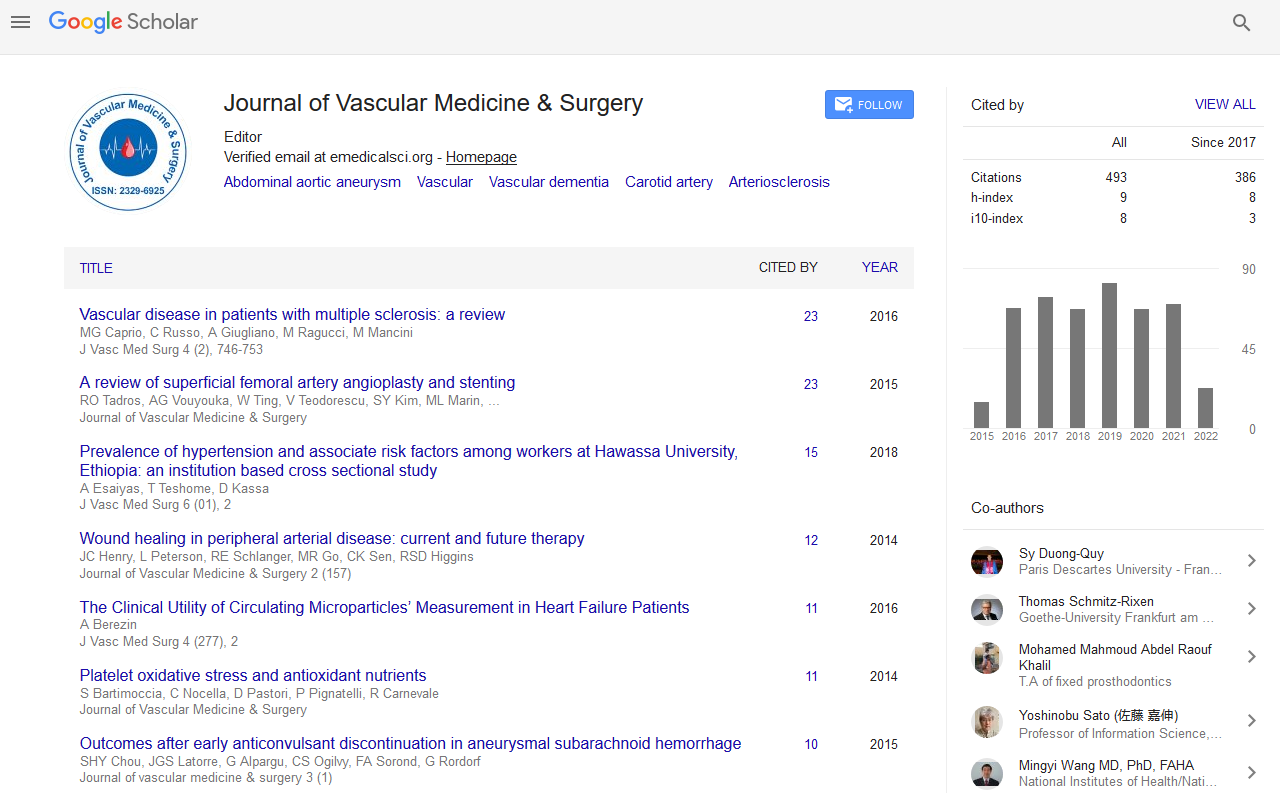Indexed In
- Open J Gate
- Academic Keys
- RefSeek
- Hamdard University
- EBSCO A-Z
- OCLC- WorldCat
- Publons
- Euro Pub
- Google Scholar
Useful Links
Share This Page
Journal Flyer

Open Access Journals
- Agri and Aquaculture
- Biochemistry
- Bioinformatics & Systems Biology
- Business & Management
- Chemistry
- Clinical Sciences
- Engineering
- Food & Nutrition
- General Science
- Genetics & Molecular Biology
- Immunology & Microbiology
- Medical Sciences
- Neuroscience & Psychology
- Nursing & Health Care
- Pharmaceutical Sciences
Abstract
Dialysis Access: Percutaneous Endovascular Interventions under Sonographic Guidance Alone
Daniel Périard, Marie-Antoinette Rey Meyer, Ould Mahoud Hemett, Jean-Jacques Mottet, Olivier Phan, Rolf P Engelberger and Daniel Hayoz
Purpose: Prosthetic shunts or native arteriovenous fistulas (AVFs) often require surgical or percutaneous endovascular interventions to correct stenosis or remove thrombosis. Catheterizations usually require radiation and iodinated contrast medium. Sonography and color-Doppler provide reliable images and measurement of dialysis access anatomy and volume flow, and have therefore a great potential to allow dialysis access percutaneous interventions in simple examination rooms without any contrast medium and any radiation, sparing time and human resources. Methods: From September 2011 to June 2016, all patients with dialysis access requiring percutaneous angioplasty, stenting, or thrombectomy were included in this cohort study and treated under sonography guidance alone. Patients with target lesion in central vessels were excluded. Efficacy outcomes were defined as improvement in volume flow and peak systolic velocity (PSV) of the stenosis. Results: Sixty-six procedures were performed in 31 patients (21 (66.7%) males; 65.5 ± 15.1 years old). There was no adverse event except moderate pain during balloon angioplasty. Primary success of the procedure was 97.0%. The volume flow rose from 449 ± 241 mL/min to 786 ± 262 mL/min and the PSV decrease from 6.1 ± 0.9 to 3.1 ± 1.1 m/s. The median time to next intervention was 10.9 months with 82.9% of re-interventions performed under sonography guidance again. Conclusions: Sonographic guidance alone is efficient and safe, for the majority of percutaneous interventions on prosthetic or native access. This approach is much simpler and cheaper, does not expose the patient and physician to radiations, and does not require contrast medium.


